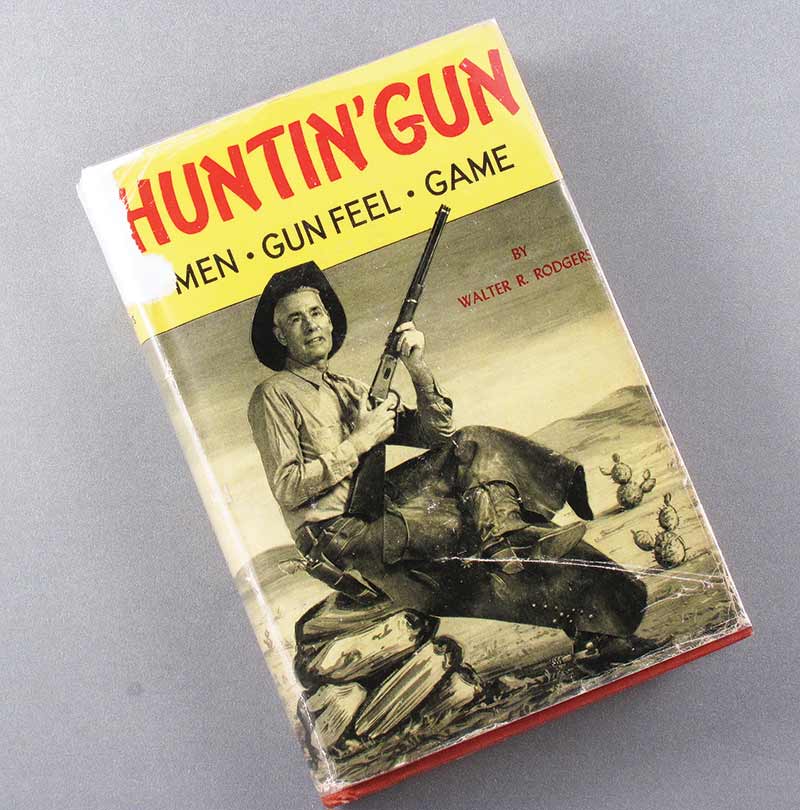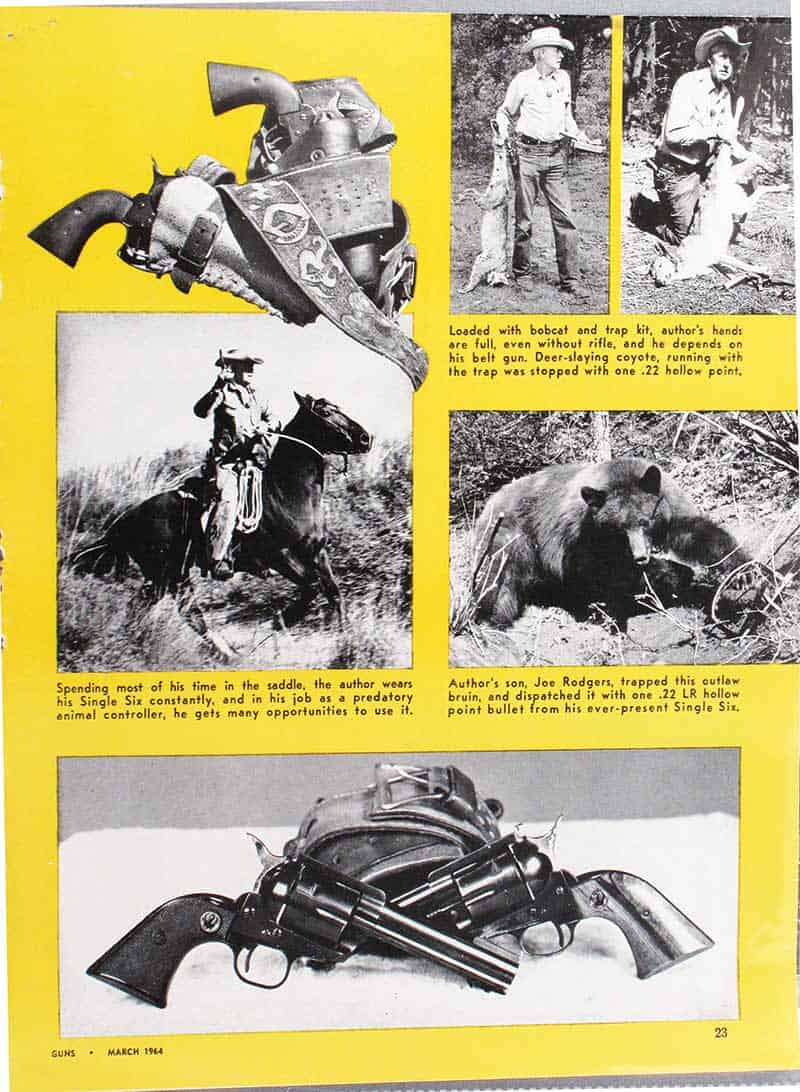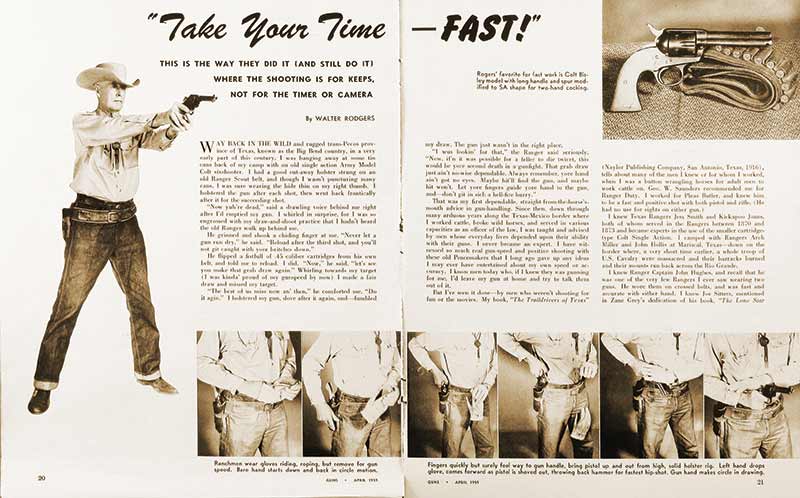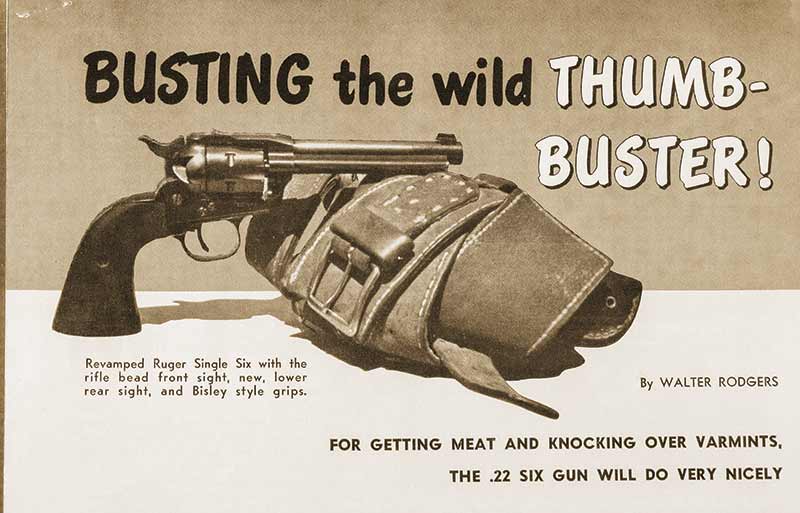.jpg)
Category: Well I thought it was neat!
A CONTEMPORARY OF ELMER KEITH, HE DESERVES ANOTHER LOOK

Oxford, Mississippi, is a quaint, storybook-sort of place. The University of Mississippi and the sprawling Winchester ammunition plant keep the community young, busy, and well-funded. A genteel southern population ensures the town is clean, safe, and cool. It’s like 1950’s America without the social baggage. Lots of people want to come here. However, it was not always so pleasant.
Liam Little & Mississippi Arms
A delightful little burg of 26,430 people nestled in north central Mississippi, Oxford has a colorful past. General Grant burned the courthouse square back in August of 1864. Two cop-killing losers were publicly executed here in 1903. James Meredith boldly broke some serious racial barriers as the first African-American student at Ole Miss back in 1962. Despite all that chaos, nowadays the Oxford Square looks like something out of Disneyworld.
As you face east, you will see Neilson’s clothing store. They’ve been in business in the same location since 1839. Neilson’s sits alongside Square Books Junior and City Hall. Now direct your gaze to the right and down the hill past the Tallahatchie Gourmet restaurant and you will find a small, nondescript store front with a neon “Open” sign in the shape of an AK-47. The sign reads, “Mississippi Arms.” Mississippi Arms is the coolest gun shop I have ever seen.
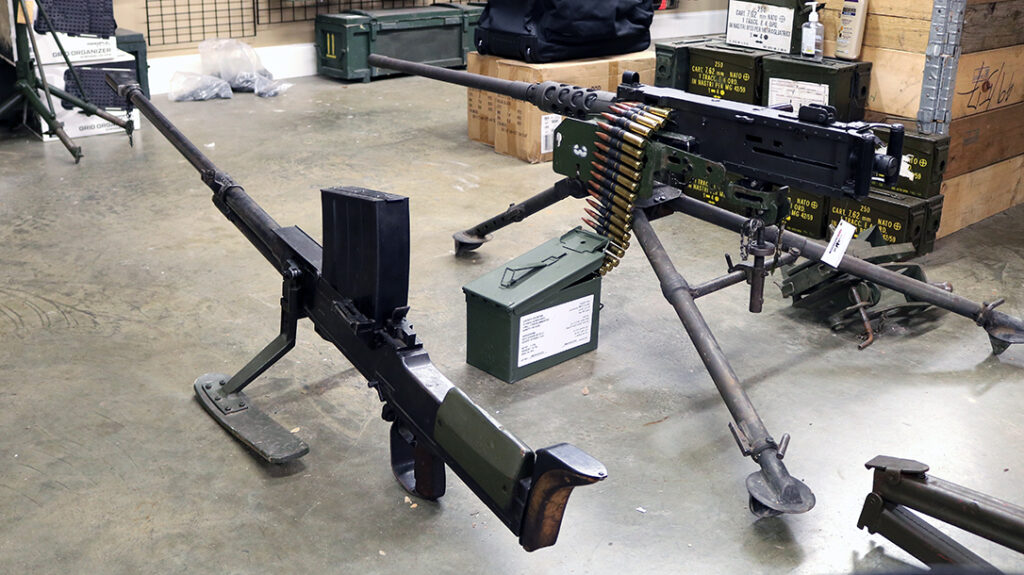
Origin Story: Mississippi Arms
Mississippi Arms began life several years ago as Mississippi Auto Arms. At the height of the Obama gun-buying frenzy, MAA sold 1,000 black rifles per year. MAA enjoyed a robust online presence selling guns, ammunition, gun parts, and accessories. They specialized in the cool, edgy stuff that keeps Chuck Schumer and Nancy Pelosi awake at night. When the owner retired, he sold the business and they changed the name.
Nowadays Mississippi Arms is Candyland for gun nerds like us. They have most everything on their website. The business is licensed as both a dealer and manufacturer of Title 2 firearms. They build their own machine guns as well as a dedicated line of sound suppressors. This store is where dreams are made. Mississippi Arms is not your typical Fudd gun shop.
The first thing you notice is the Lahti 20mm anti-tank rifle sitting on the floor alongside a Ma Deuce .50-caliber machine gun on a tripod. Hanging on the wall is a live RPG-7, a PKM belt-fed machine gun, an M-60 with a sound suppressor, and a German MG34. A row of selective-fire, short-barreled FN SCAR carbines sits along one wall waiting to be cut up into parts kits. A bewildering array of black rifles blankets the walls. At any given time, a handful of local gun geeks congregates in the place griping about gun laws and generally solving the problems of the world. Throughout it all, sitting behind the counter is an amiable young guy with an ever-so-slight foreign accent. That’s 26-year-old Liam Little, owner and chief bottle washer at Mississippi Arms. Turns out Liam is a political refugee from Canada. His is a simply fascinating tale.
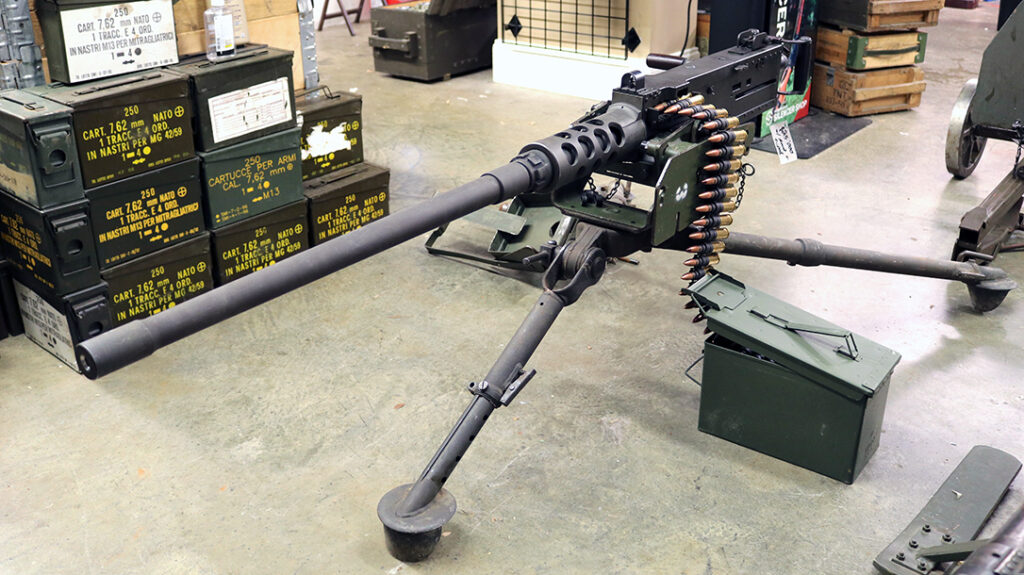
The Guy: Liam Little
Have you noticed that illegal immigration seems to be in the news a lot these days? With 320,000 migrant encounters on the southern border in December of 2023 alone and an estimated 16 million undocumented aliens already in the country, immigration will undoubtedly be the seminal issue of the upcoming Presidential election. It seems half the planet is flowing across our porous borders claiming asylum from something or other. Amid a veritable sea of unwashed humanity streaming into America illegally, Liam Little actually did it right.
Liam is a die-hard gun nerd with the poor grace to have been born in Montreal, Canada. If you are a gun guy, living in Canada these days is not philosophically unlike growing up in North Korea. The Canadian government just doesn’t trust its citizens with firearms anymore. When faced with a lifetime of unarmed servitude, Liam immigrated south.
Talking to Liam is a bit like chatting with Elon Musk. The guy just has an energy. He sees problems and engineers solutions. He is a natural businessman.
Liam is technically in the United States for law school on a student visa. When I was last there, he was complaining that they wouldn’t let him CLEP out of law school a year early. He runs his thriving gun business while simultaneously attending class at the University of Mississippi law school right down the road. The storefront is closed Sunday, Monday, and Tuesday so Liam can get his coursework done. He’s a pretty busy guy.

Draconian Politics
So, how does a kid from Canada in the country on a student visa for law school legally own a machine gun business? For starters, you have to be really smart and know the law really well. Then you just have to have the drive. Liam’s motivation is a pure and holy quest for freedom.
At a time when disdain for America seems to be the engine that propels the radical Left to ever more-rarefied attacks on individual liberty, Liam has tasted the pure elixir of freedom and just can’t get enough. As a burgeoning lawyer, he knows the rules and goes to meticulous lengths to work within them. He obtained the requisite licenses to run his thriving gun business all with Uncle Sam’s blessings. I’ll spare you the details except to say that his approach was undeniably elegant.
Like most people I have known who came to America seeking political freedom, Liam has little use for those who denigrate the United States. Most folks who gripe about America have simply never lived anyplace else. Liam cannot stand Justin Trudeau and his mob of meddlesome Left-wing socialists up north. He knows from personal experience what it is like to live in a place where gun ownership is prohibited and cherishes the unique liberties we enjoy in America. His life goal is to fully assimilate into our culture and make his way in the gun business.
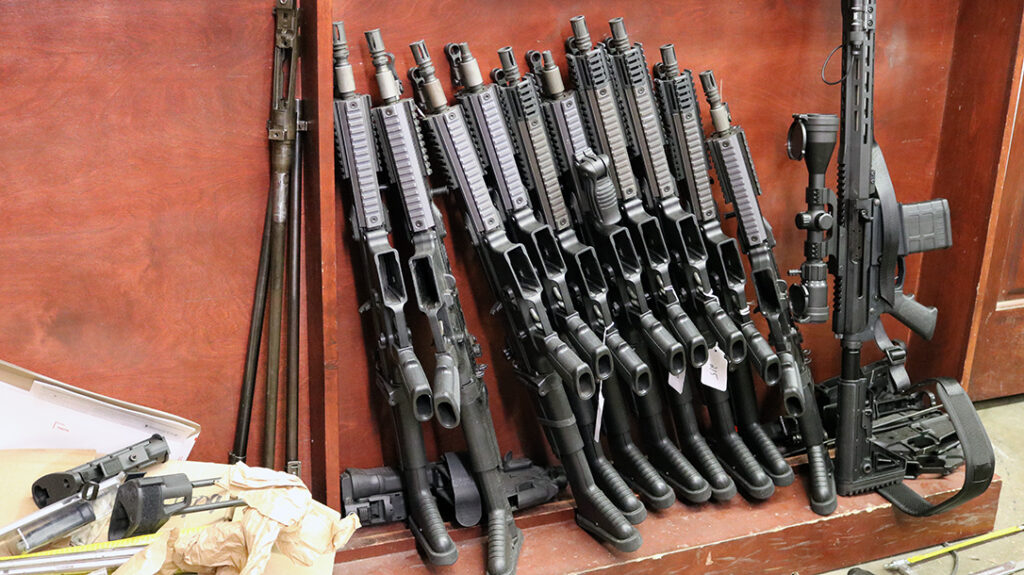
Details
It’s worth a surf over to Liam’s website. His home-grown .22 rimfire cans will run $235 apiece. When I was there he showed me prototypes for a replica WW2-vintage Soviet Bramit suppressor. The Bramit can slips over the muzzle of a Mosin-Nagant bolt-action rifle and locks in place with a twist. Like the originals, there is ballistic data engraved on the side to accommodate reduced-charge subsonic loads.
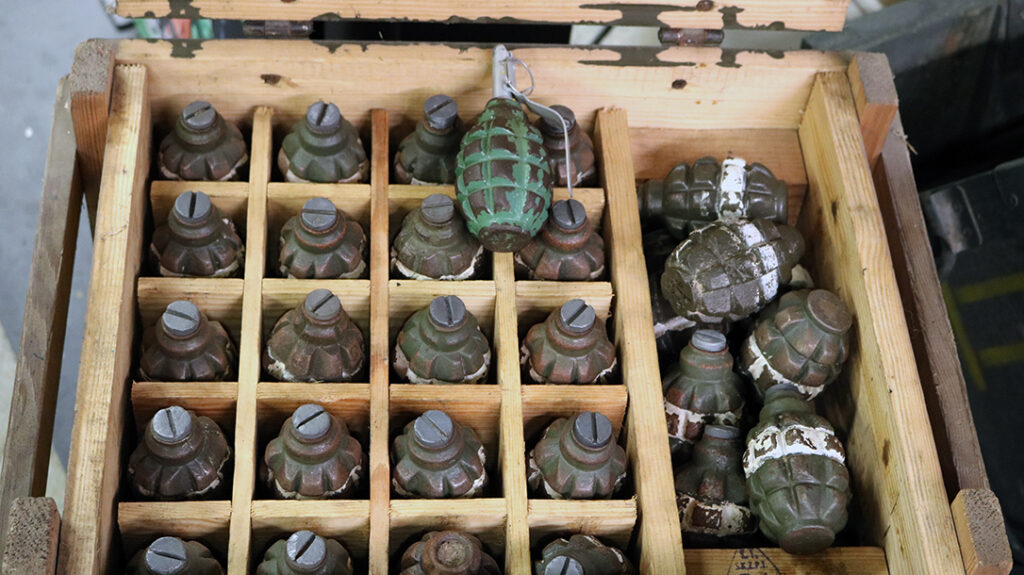
Ruminations
We gripe about American gun laws all the time, and rightly so. Without constant vigilance the freedom-averse hoplophobes in Washington will invariably strip our rights away just as their counterparts did up north. However, for the time being at least, we still enjoy unrivaled access to firearms for both personal protection and recreation.
Liam Little is the real deal. Raised in a socialist paradise, Liam came to America seeking the purist expression of personal freedom on planet Earth. Liam personifies the American dream in the Information Age. Unlike so many other immigrants, however, he is doing so legally through personal force of will, detailed knowledge of the law, and raw, unfiltered heart.
The next time you need some gun widget, surf on over to MississippiArms.com and see if Liam has it in stock. If ever you are passing through Oxford, Mississippi, on a Wednesday through Saturday, do yourself a favor and drop by the store for a chat. Mississippi Arms is a cool place, and Liam Little is a cool guy. Mississippi Arms is where freedom thrives.
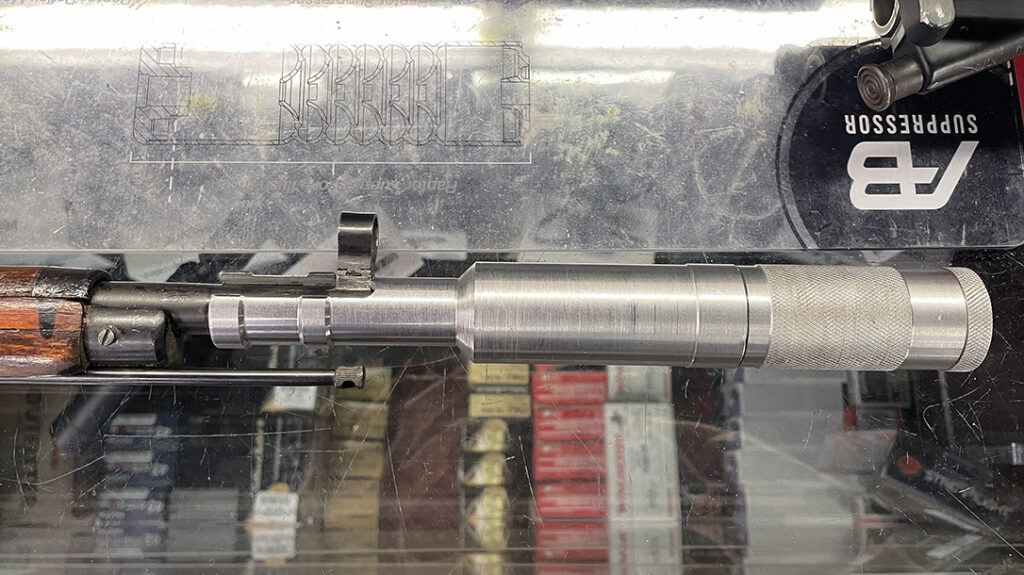
When I first became involved with the U.S. Army’s High Altitude Rescue Team (HART) back in the 1990s, there was a steep learning curve. The mission was to retrieve injured climbers from Mount McKinley and support the National Park Service (NPS) in their mountain operations. At 20,310 feet, Mt. McKinley is the highest point in North America. They call it Denali now. This was quite an unnatural space for a helicopter.
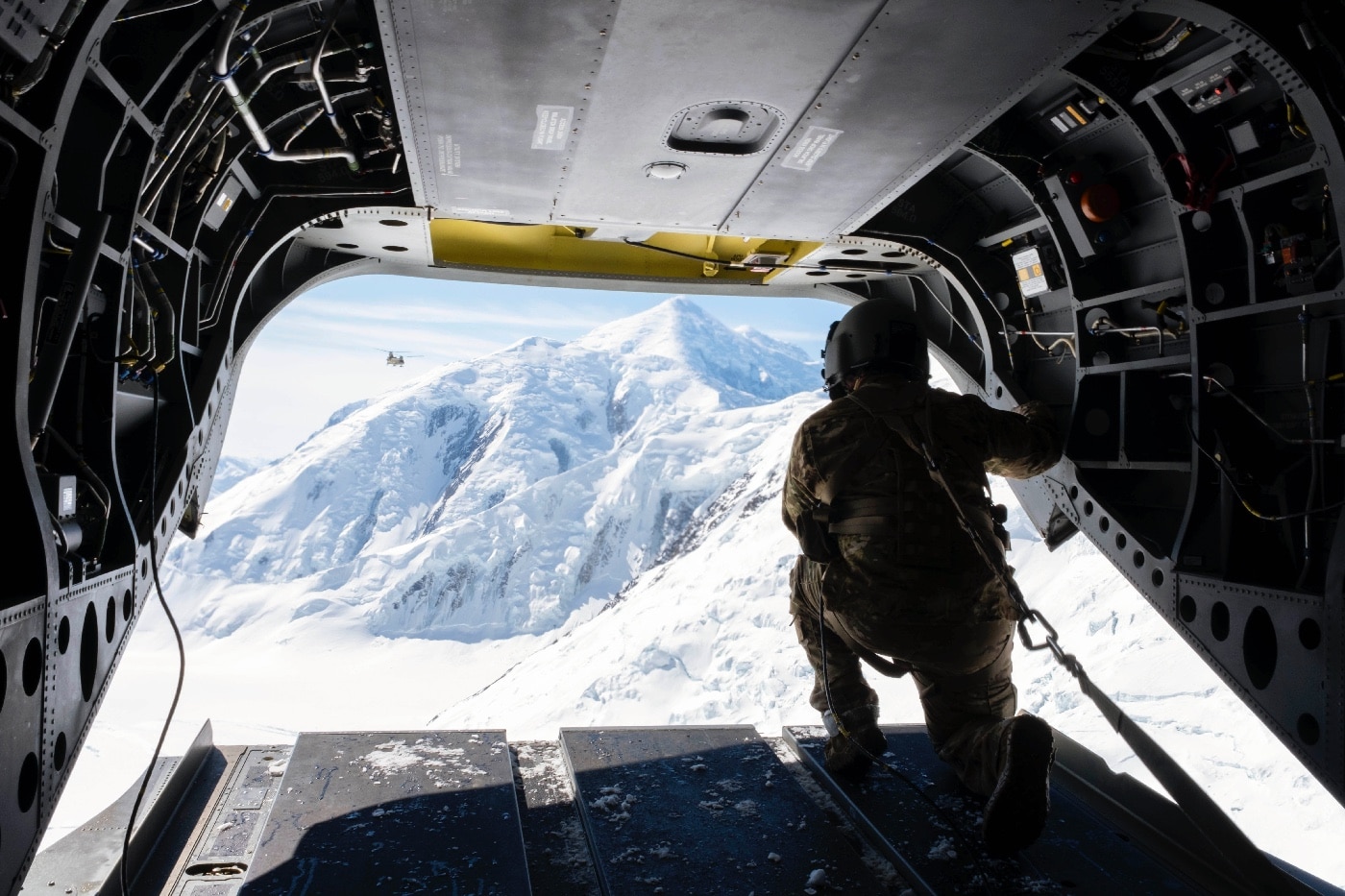
The National Park Service owned the mountain, and they had a contracted civilian helicopter that was based in Talkeetna, Alaska, during the climbing season. This single-engine French Aerospatiale Lama was stripped down to its bare essentials to give it maximum performance at extreme altitudes. When first I crawled aboard this aircraft, I noticed that the copilot’s seat and flight controls had been removed. Needless to say, I was impressed by the bravery required to be a pilot of this helicopter.
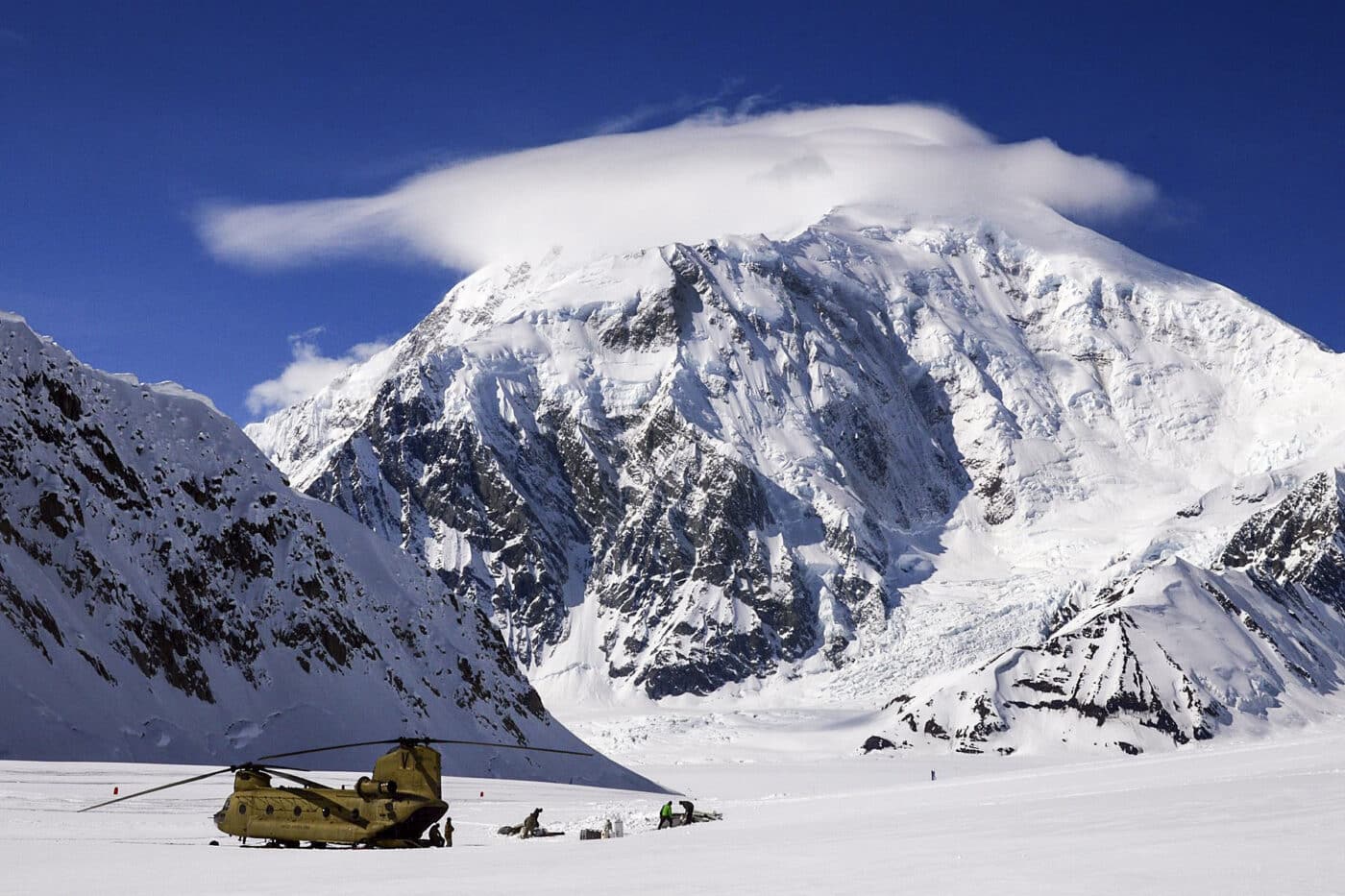
For routine trips up the mountain, if ever that was a real thing, the NPS used the Lama. For those times when the Lama was broken, or a bit more horsepower was required, they called us. I can honestly say that flying a helicopter over the top of Mount McKinley was the most extraordinary thing I did as a U.S. Army Aviator.
The Aircraft
For the HART mission, we utilized otherwise unremarkable Boeing CH-47D heavy-lift helicopters. We gutted our Chinooks of any unnecessary kit and fitted them with auxiliary internal fuel tanks and an onboard oxygen system for the crew due to the altitudes in which we would be flying. This labyrinthine thing included plumbing that ran oxygen lines to each crew station to support the flight crew while operating these unpressurized aircraft at extreme altitudes. Our crewmembers also had walkaround bottles that would keep them conscious while moving about the cargo compartment.
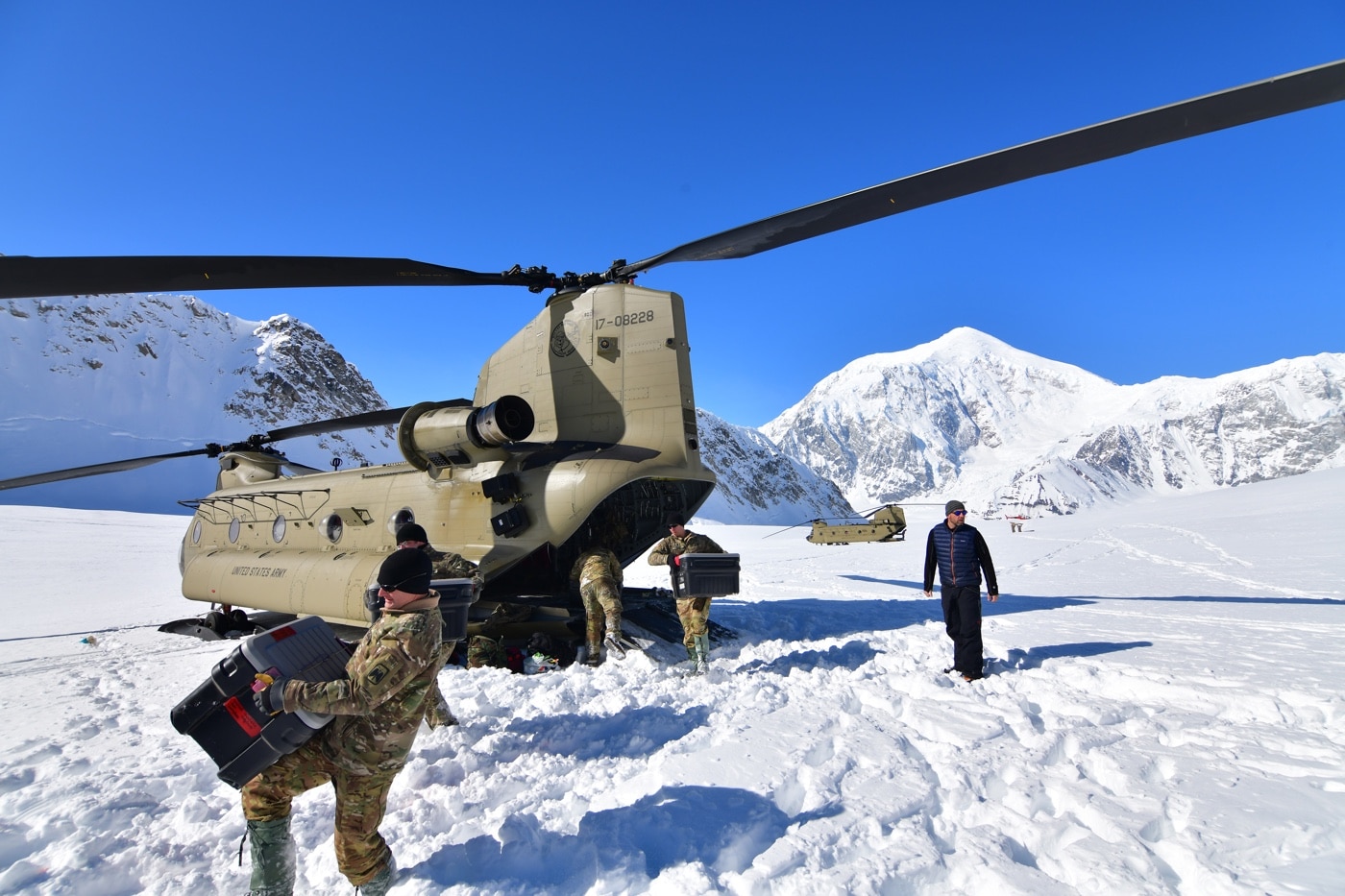
The max gross weight for a CH-47D is 50,000 pounds. Its twin Lycoming turboshaft engines put out an aggregate 9,000 shaft horsepower. It is an immensely powerful machine. However, at 21,000 feet the Chinook becomes a big fat pig. Great care had to be taken to plan maneuvers well in advance when the air was that thin. Those sorts of altitudes are terribly unforgiving. However, thusly configured the big Chinook would reliably get us there and back.
The Mission
Denali is actually the tallest mountain on earth, as measured from the base to the summit, even taller than Everest. While the peak of Everest is higher, you don’t have to climb as far to get there. Each year about 1,200 climbers attempt the ascent. Roughly half of them make it. Folks die on that rock all the time. There have been 96 fatalities on the mountain since the first successful ascent in 1913.
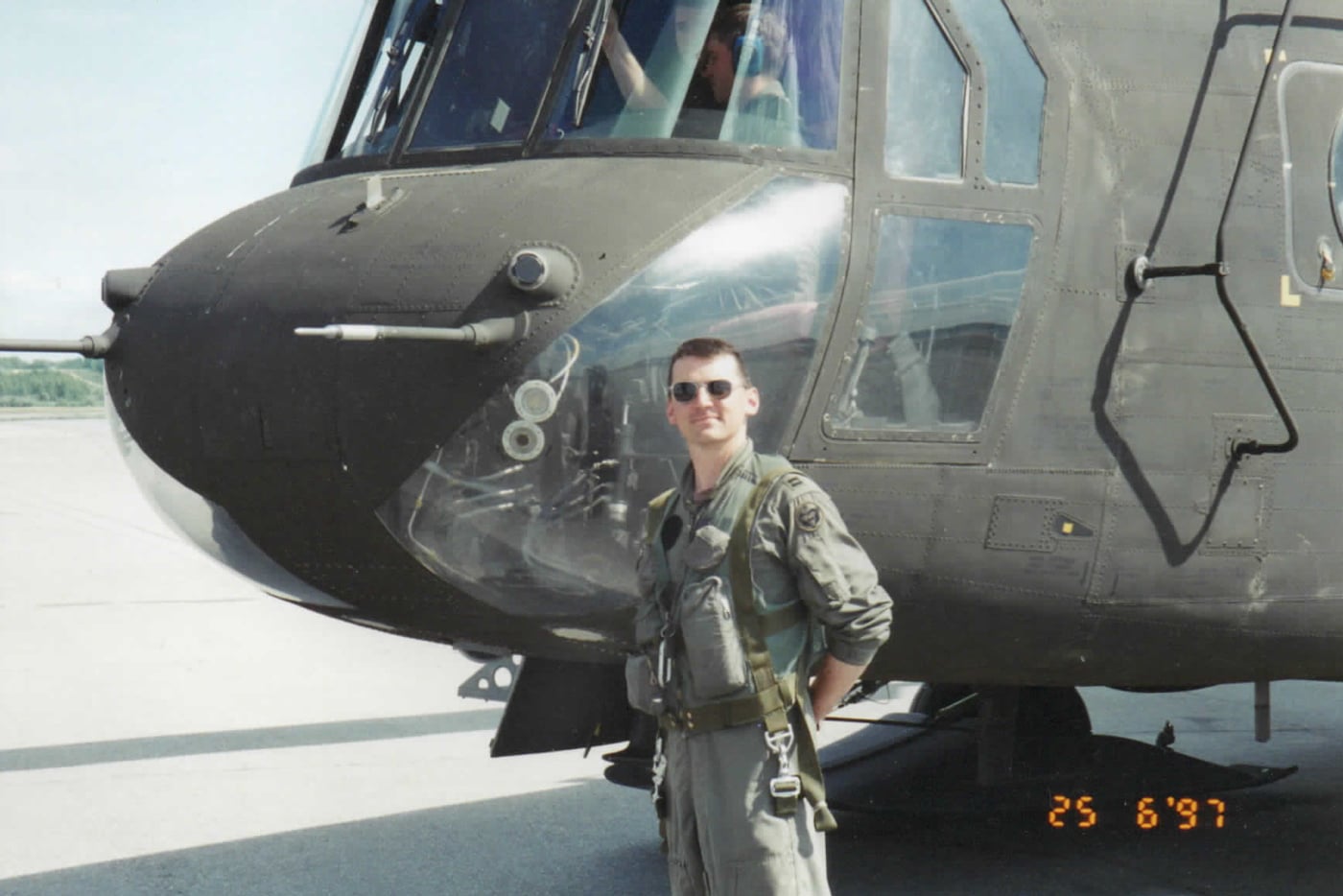
The NPS maintains a presence at both the high and low base camps on Denali throughout the approximate three-month climbing season. The low base camp is at 7,200 feet on the Kahiltna glacier. The high base camp is at 14,200 feet.
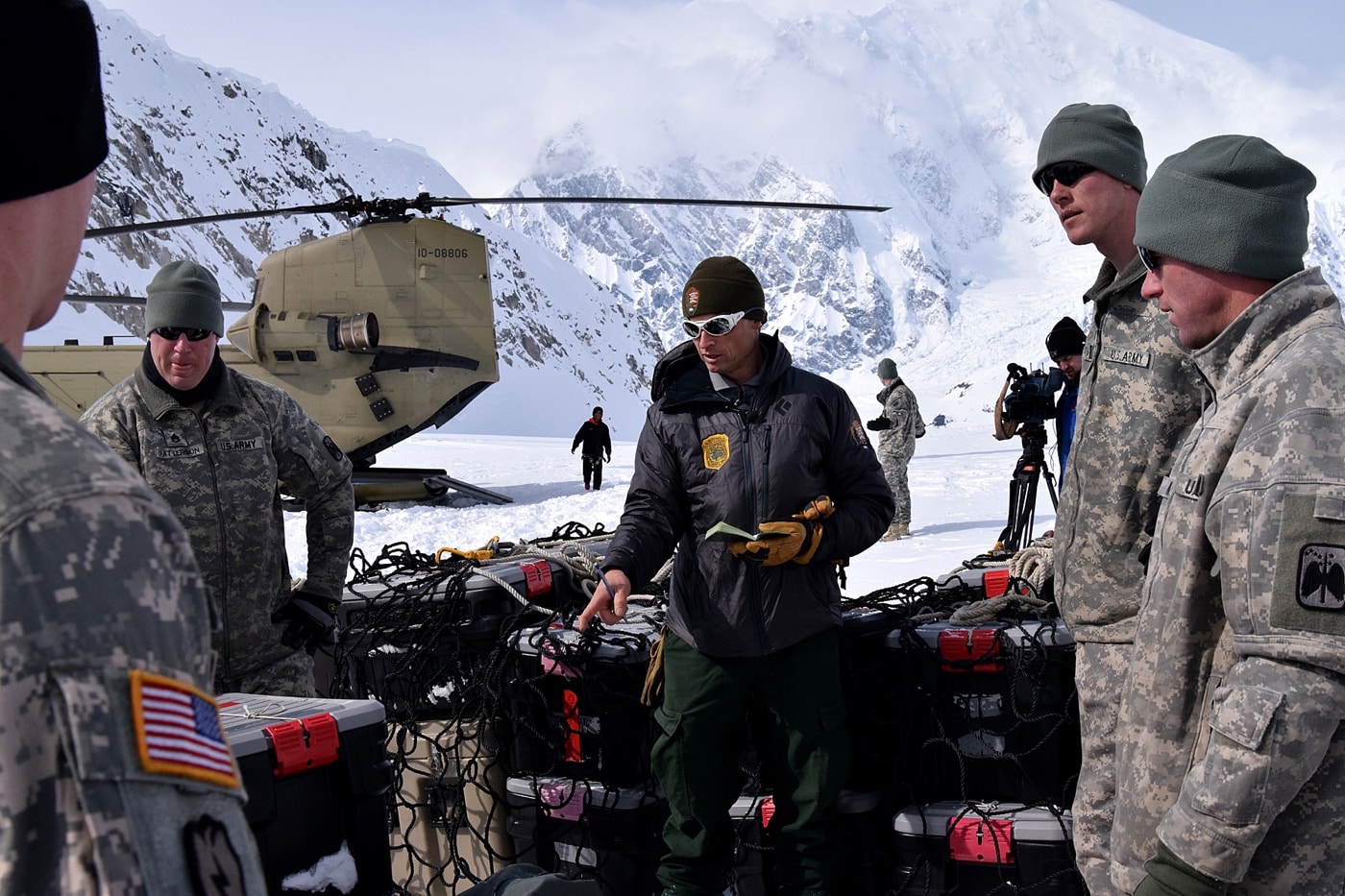
At the beginning of the climbing season, the HART team is responsible for emplacing the equipment to support these base camps. This consists of tents, food, fuel, radios and the sundry stuff required to keep people alive in such an austere environment. The HART team also retrieves everything at the end. These Army Chinooks also cover the gaps that the small civilian helicopter cannot.
Denali makes its own weather. As many a tourist has discovered to their disappointment, oftentimes the mountain is socked in while the rest of the surrounding area is clear and pretty. As the CH-47 is fully instrument capable, it can sometimes reach the mountain when the Lama cannot. The Chinook is also equipped with a rescue hoist that offers capabilities not available to the smaller machine. In 1988, the HART team set the world record for a helicopter hoist rescue at 18,200 feet. In 1995, the HART team performed a live rescue at 19,600 feet, setting a record for the CH-47 airframe.
War Story
On 3 June 1996, we were on a training mission to get our aircrews qualified for the climbing season. We always ascended the mountain in pairs. The weather had been sketchy and getting to high altitudes had been a challenge.
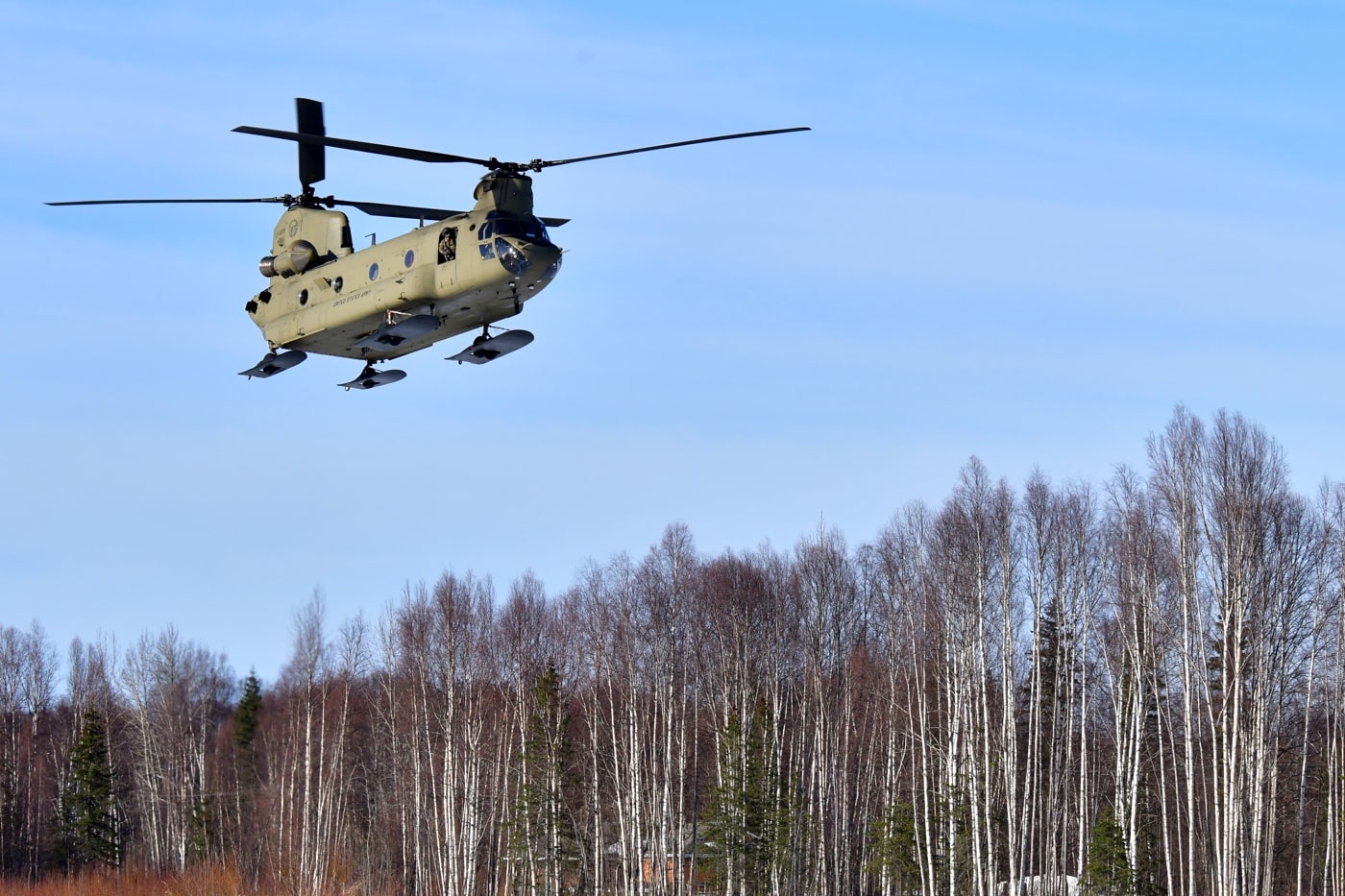
Two days before, a Spanish climber named Juanjo Garra lost a crampon and fell at the 18,000-foot level at Denali Pass, breaking his leg. At these sorts of altitudes, this is a catastrophic injury. NPS rescue personnel laboriously carried the man to the 14,000-foot base camp, but by then, he was in dire straits.
As we shot a careful approach into the high base camp, we knew nothing of Mr. Garra or his injury. Once we touched down, an Air Force pararescueman who was climbing the mountain as part of a training exercise flashed us with a signal mirror. He explained that Garra had to be removed from the mountain or he could die.
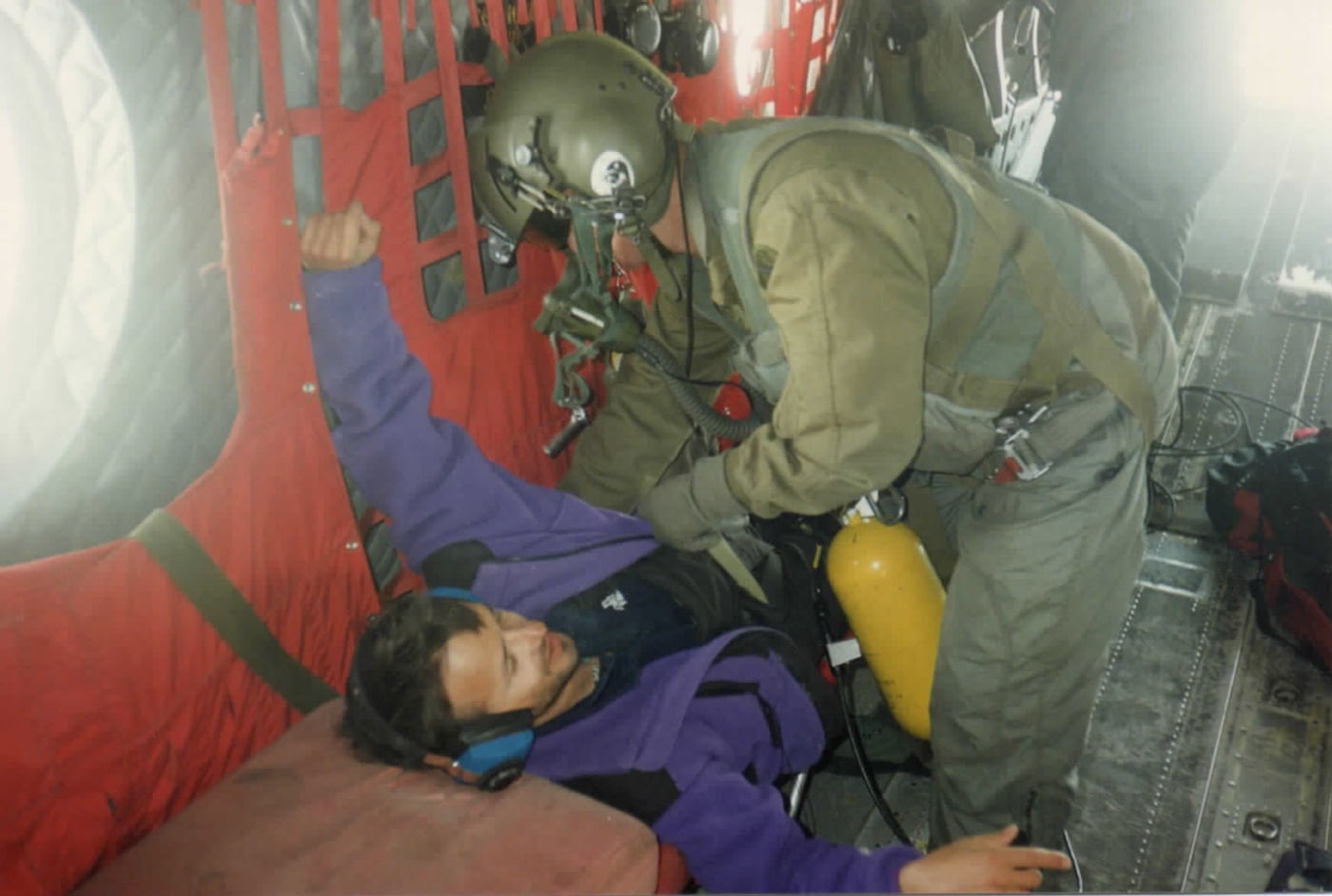
The formal approval process for rescue support was laborious. Each live mission had to be approved by the first General Officer in the chain of command. However, they claimed we Army officers were supposed to show initiative. Mr. Garra was soon strapped in alongside his climbing partner, a Spanish cardiologist. Incidentally, I think that was the closest I have ever come to being kissed by a man. That guy was pretty stoked to be getting off that mountain.
We flew the two Spaniards to the low base camp where they were loaded onboard a ski-equipped airplane for the trip to the Anchorage hospital. I flew home that afternoon assuming I had done a good thing. My boss felt otherwise.
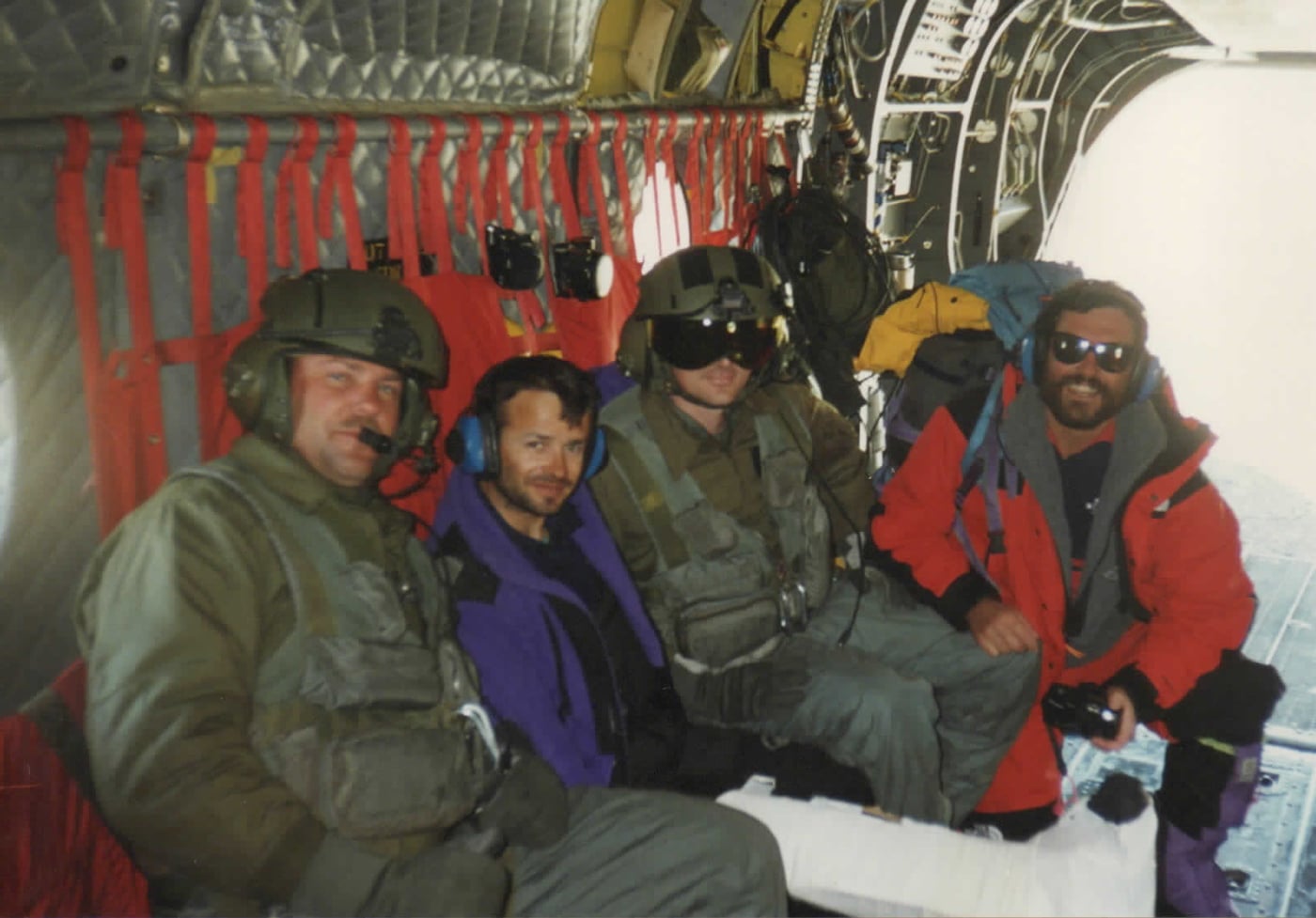
Once we got the aircraft shut down I was dragged into my commander’s office for a proper butt chewing. My on-the-spot decision had completely circumvented the chain of command. I had allowed two foreign nationals onboard a U.S. Army aircraft without proper authorization. The liability had been astronomical. What if the aircraft had crashed? What if there had been an in-flight emergency? What if, what if, what if…
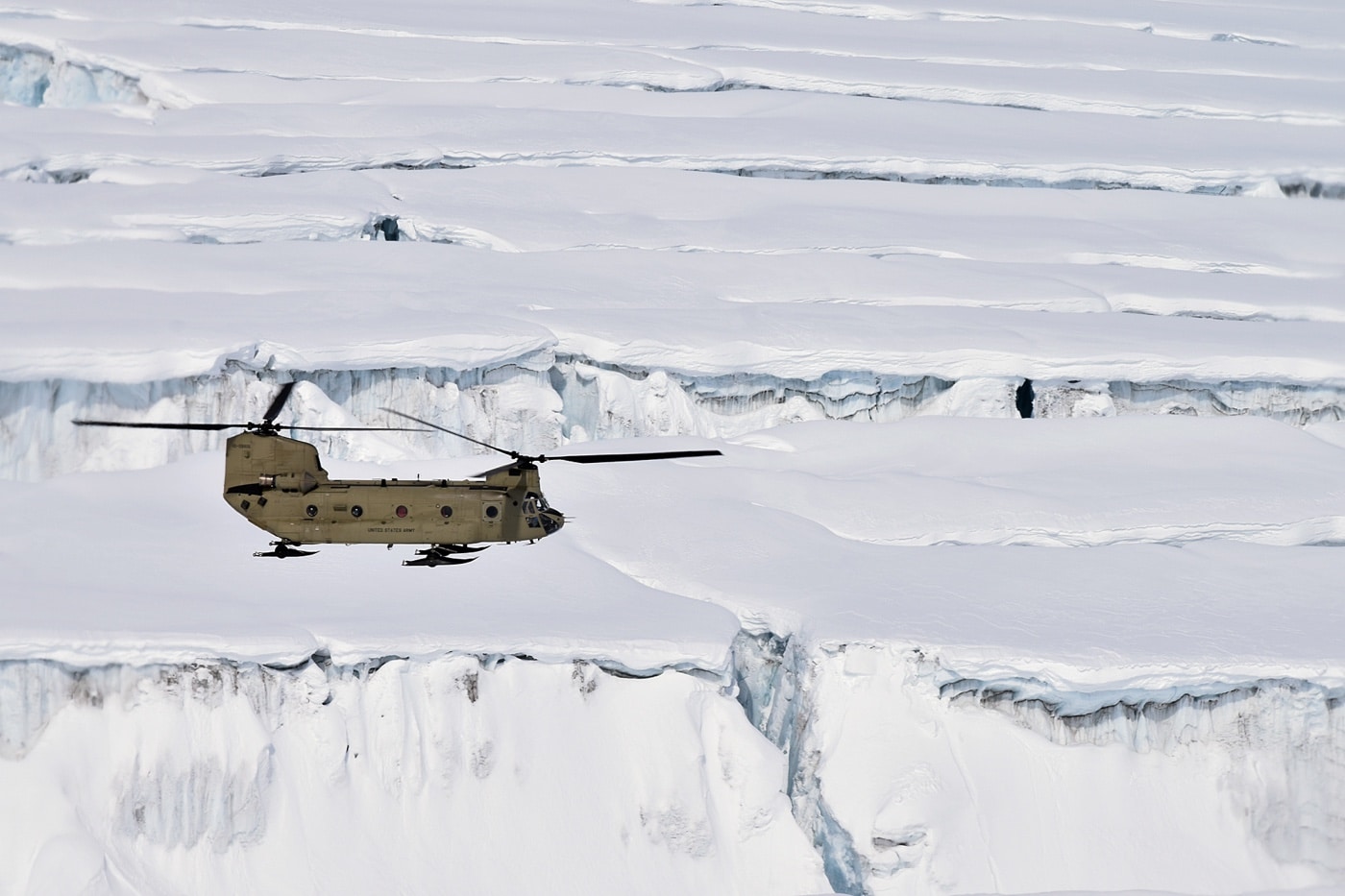
While I was getting reamed out, the phone rang. It was the U.S. Coast Guard congratulating us for the rescue. They wanted the names of the crew for the press release. My boss hung up the phone and sighed. He reluctantly congratulated me for saving a man’s life but then directed me never to do it again.
It has been 27 years since that weird afternoon on Mt. McKinley. I left the Army soon thereafter and went to medical school. Along the way I bought a laptop and tried my hand at writing. Until I was researching this article I had never known Juanjo Garra’s name. I sincerely hope he is well.
——————————————————
A side note from Grumpy
MAY 2013 Spanish mountaineer Juanjo Garra has died on Dhaulagiri (8167m).
Yeah, I know I’ve seen that title someplace before. Anyway, it was an interesting day yesterday. We live way out in the sticks and have a modest lake for a backyard. It was a great place to raise kids. Now that our children are grown and gone, my wife beats me at a game of some sort every afternoon I’m home. Every now and again, I’ll pull one out, but that’s rare. She always was the smart one. Yesterday, she was busy smoking me at cards when I glanced out the window and saw him — a ginormous water moccasin cruising leisurely across the lake like he owned the place, which he kind of did.
This thing looked like some kind of sea monster, cutting a wake like a heavily laden oil tanker as he plied his way from where he was to where he wanted to be. Without regard for my personal safety, I leapt into action, prepared in an instant to defend my bride from venomous peril. It was also a handy excuse not to lose at least one card game.
Now, many modern sensitive folk will take umbrage with my unfettered genocide of the Agkistrodon piscivorus. Some feel that water moccasins are like big, slithery hamsters and that we should welcome their fanged presence in our living spaces in the spirit of peaceful coexistence. Screw that. I’m a doctor. I have seen what happens when a person gets bitten by one of these monsters. This is a little-known fact, but water moccasins were the reason God first made firearms.
Around the world, some 5.4 million people are bitten by snakes every year. Those bites result in between 1.8 and 2.7 million envenomings. Roughly 100,000 people die from snake bites per annum. About three times that number lose limbs. While most of those casualties are indeed found in Africa, Asia and Latin America, I still like to feel like I am doing my part. I religiously avoid harming non-venomous snakes, but I kill every water moccasin I can find on sight.
Tools Of The Trade
I have tried lots of tools. Shotguns of various sorts are great … at appropriate ranges. I have splattered half a dozen of the toothy monsters from across the lake to no practical effect. In one case, I am fairly certain when next I saw that big gentleman gliding across the lake, he was rocking an eye patch. I have found the ideal counter-snake tool to be a TacSol sound-suppressed .22 rifle.
My example was spendy, but it shoots like a laser and is completely ear-safe. Unlike many .22 rifles, it is also exceptionally reliable. I love this thing. Together, my TacSol and I have accounted for dozens of moccasins over the years.
All In A Day’s Work
In this particular case, I tore downstairs, grabbed my rifle, slapped in a magazine, jacked the bolt, and ran outside only to find that the scope was frosted darker than Chuck Schumer’s soul. I live in rural Mississippi. It is a literal jungle down here. In the summertime, the humidity is so high you can tear off a chunk of air and gnaw on it. When you take a cool piece of glass and put it in a really hot, wet place, moisture condenses on the lens. As a result, I keep a blow dryer by the back door. A quick five-second blast front and back solves the fogging problem. It’s the price we pay to live in God’s country.
By the time I finally got to the water’s edge, he was at a slant range of about 20 meters, his massive triangular head perched jauntily above the surface. I drew a careful bead, attended to my breathing, and popped him through the nugget. Then I shot him 24 more times, just to be sure. I really, really hate poisonous snakes.
I climbed into the canoe and paddled out to retrieve my prize. This one was a real gentleman, measuring a full 44 inches from tail to beak. When I hefted him up with my paddle, he was shockingly heavy. He also reeked of rotten fish, as do they all.
I often skin these things, particularly the big ones. I wouldn’t eat a water moccasin for love or money, but they do have pretty hides. You nail the head to a tree, ring the neck, and tease the skin back, flaying it free with a 10-blade scalpel. Then, drop the skin in a mason jar filled half-and-half with rubbing alcohol and glycerin. Let the skin soak for a month or two before stretching it out on a board. The end result is both durable and gorgeous. However, if you store the hides in your workshop, the mice will eat them. Ask me how I know this.
Anyway, some lunatic shot this lovely specimen full of holes, so I just snapped a few pictures and then tossed him back in the lake. The hungry turtles looked grateful. This was the 62nd moccasin I have culled from my backyard in the 20 years we have been here. I keep count. At the end of the day, however, the world is now down one massive water moccasin. It has indeed been a lovely afternoon.
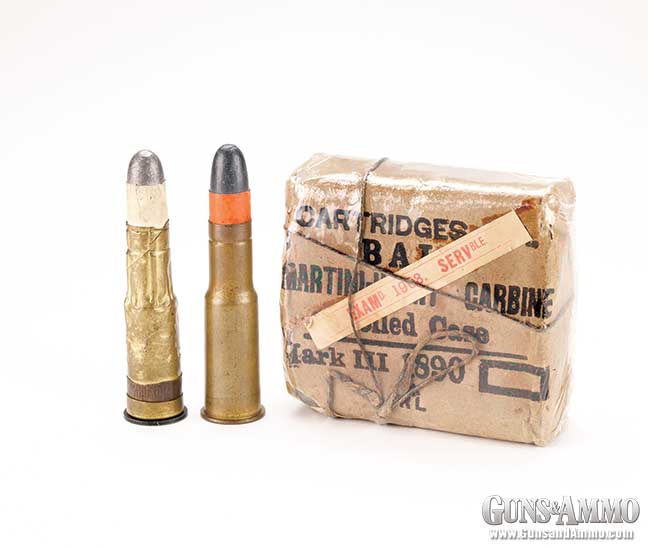
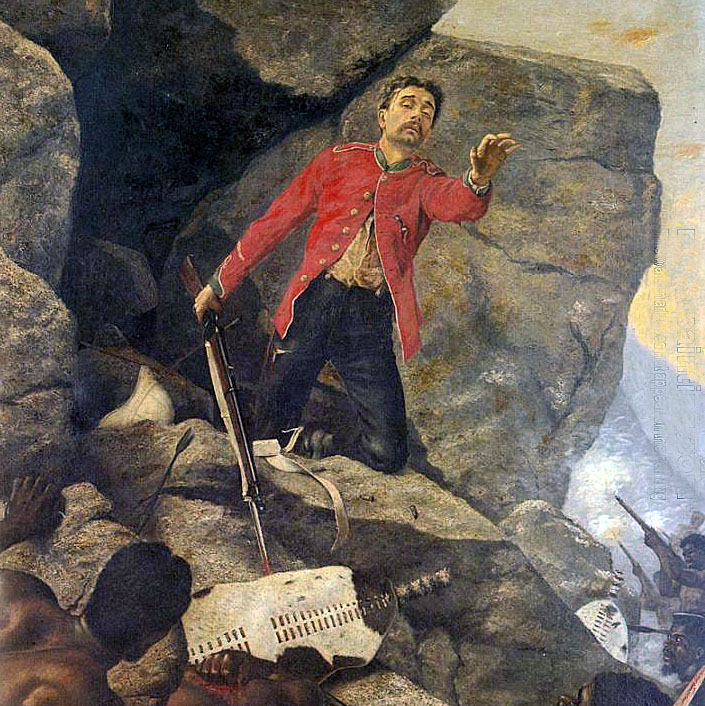
Some 1,450 men of Lord Chelmsford’s command lay dead on the South African plain at Isandhlwana. A force of 20,000 Zulu warriors under their king Cetshwayo had all but destroyed the British force comprising six companies of the 24th Regiment of Foot (2nd Warwickshire), wagon drivers, volunteers, staff and camp followers.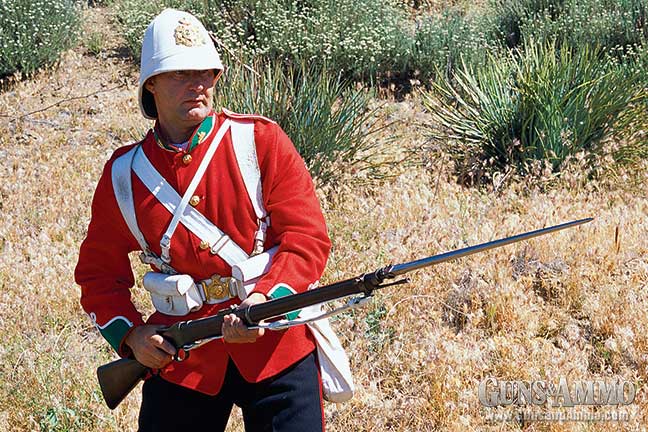
Another force of 4,000 Zulus was on its way to the small mission station-turned-hospital at Rorke’s Drift. Awaiting the onslaught were 84 men of B Company, 2nd Battalion, 24th Regiment of Foot; soldiers of the Natal Native Contingent; 36 hospital patients; and men of the Army Hospital Corps.

Britain’s legendary single-shot Martini-Henry rifle achieved its greatest fame during the hard-fought Zulu Wars of the late 1870s.
On January 22, 1879, while working on the bank of the Drift, Lieutenant John Chard, Royal Engineers, officer commanding at Rorke’s drift, received news of the slaughter at Isandhlwana. He rushed back to the mission to discover Lieutenant Gonville Bromhead, Commander of the men of the 2/24th, had also heard the intelligence and was preparing to move the invalids to safety in heavy ox-carts.
Chard realized that the slow-moving vehicles would never get the men clear of the Zulus, and he ordered that perimeters of biscuit boxes and mealie (maize) bags be set up to act as defensive barricades. Men of the Natal Kaffirs, retreating from Isandhlwana, arrived during these preparations and were pressed into service.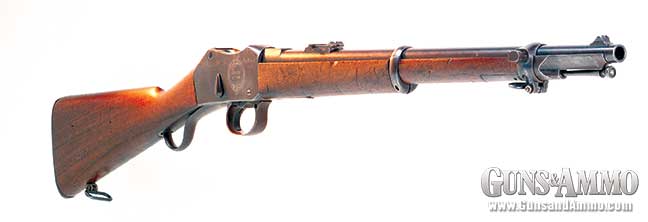
The Martini-Henry was also available in shorter cavalry and artillery (shown) carbines. As these guns were not as heavy as their infantry cousin, special lighter loads were concocted. Their paper patches were color-coded to differentiate them from the standard round.
Several members of the 2/24th were sent into the hospital to guard the patients, and the rest of the forces were positioned to await the Zulu onslaught.
The defense of the mission station at Rorke’s drift has become one of history’s most famous “last stand” type of engagements. But the battle’s notoriety with the public at large was rather late in coming.
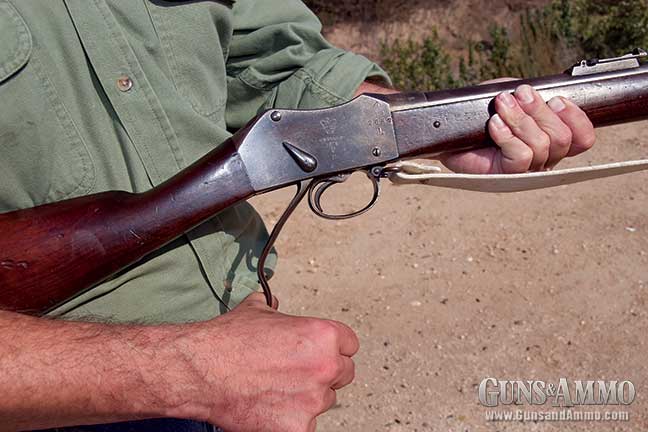
With the exception of die-hard military history buffs, it was largely unknown until the release, in 1964, of Cy Endfield’s epic cinematic depiction of the event, “Zulu.” Starring Stanly Baker, Jack Hawkins and a then-unknown Michael Caine, the movie, while wildly inaccurate in places, was still a stirring retelling of the event and for the most part kept pretty much to the spirit of the engagement.
Some 15 years later a prequel, “Zulu Dawn,” featuring Peter O’ Toole, Burt Lancaster and John Mills, about Isandhlwana, also by Endfield, came out, and while more accurate and authentic than its predecessor, it had little of “Zulu’s” élan.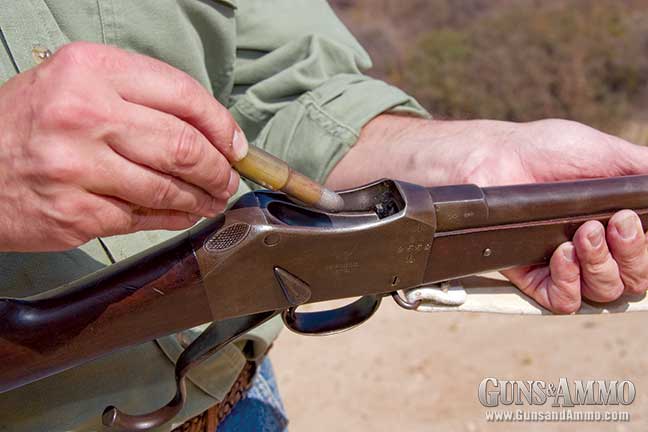
As well as illuminating the actual Battle of Rorke’s Drift, Zulu made a rather obscure military rifle famous — the Martini-Henry. Over the years, prices on Martini-Henry rifles rose steadily and quantities diminished, until recently when International Military Antiques, in association with Atlanta Cutlery, brought a large number of them (along with accessories) out of Nepal — a boon for shooters and collectors.
The .577-450-caliber Martini-Henry was the standard infantry rifle issued to the men of the 24th and other regular troops in the British army. Shorter carbine versions were available for cavalry and artillery.
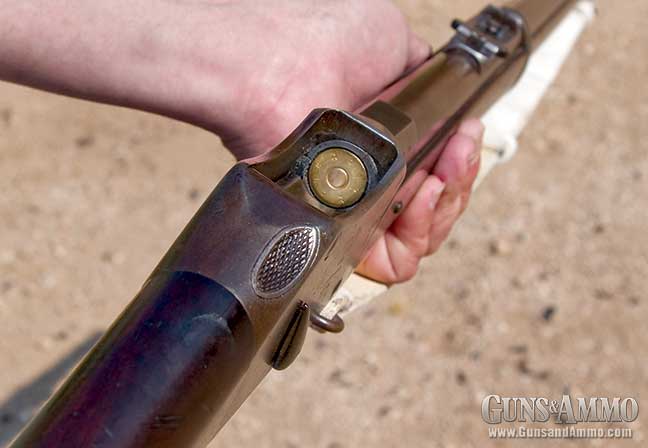
The Martini-Henry started out life as the contrivance of American designer Henry O. Peabody. Peabody’s design was modified by Friederich von Martini in Switzerland and redesignated the “Peabody-Martini.” The British adopted the action, adding a barrel rifled with the system of Scottish gunmaker Alexander Henry and christened the rifle “Martini-Henry.”
To operate the action, a lever located beneath the wrist of the stock was lowered sharply, causing the breechblock to drop and expose the chamber. This movement also operated an ejector, which pulled loose the fired cartridge case. No safety was incorporated into the system, although a cocking indicator on the right side of the receiver showed when the arm was ready to fire.
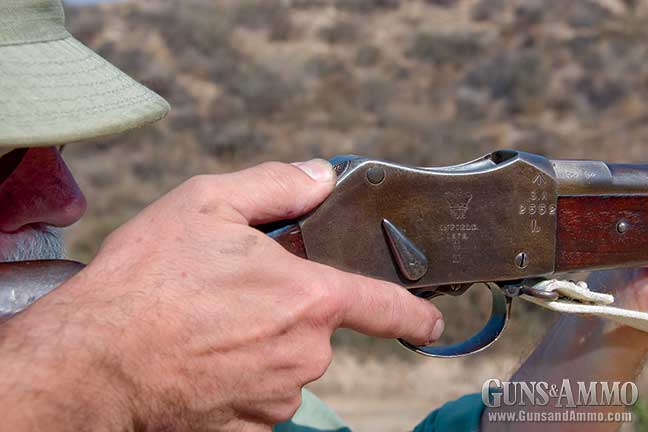
The Martini-Henry rifle was 54 inches long with a barrel length of 33.2 inches. Weight of the Martini-Henry was a hefty nine pounds. The rear sight was graduated to 1,400 yards, although the long-range shooting ability of the Martini-Henry was found to be somewhat lacking.
The cartridge adopted was a necked-down version of the earlier .577 Snider round. (Actually, Snider rifles, carbines and ammunition were still being used by some native and auxiliary troops during the Zulu War.) The .450-caliber paper-patched lead bullet weighed 480 grains and was pushed along at 1,350 fps by 85 grains of black powder.

Of the Boxer variety, the round was made from coiled sheet brass with a japanned iron base. Recoil was substantial, and this, coupled with the Martini-Henry rifle’s rather straight wrist, caused many an inexperienced recruit to give himself a nosebleed when his thumb smacked into his face if he was gripping the stock incorrectly. Ordnance authorities thoughtfully provided a thumbrest on the top of the action to avoid such a happenstance.
Enlisted men were issued a triangular bayonet with a 21½-inch blade. This fastened to the barrel by means of a socket, which slipped over the muzzle and was secured by a ring that was rotated over the front barleycorn sight. Sergeants were required to carry the Pattern 1873 Sword bayonet, which had a 22½-inch wavy yataghan-style blade. Unique bayonets were also available for the artillery carbine, and special cutlass-style blades were issued to the Royal Navy.

Interestingly enough, while Martini-Henry rifles were featured prominently (and correctly) in the movie “Zulu,” the revolvers used were World War I-vintage Mark VI Webleys. As well, some bolt-action Long-Lee-Enfields can also be seen in the rear ranks, as there were not enough Martini-Henry rifles available to arm all the extras.
The Zulus attacked Rorke’s Drift’s meager fortifications at sunset, forcing the British to abandon the outer perimeter and retire to the inner line of biscuit boxes and mealie bags. Throwing themselves with superhuman strength at the defenses, the Zulus eventually breached the small hospital building. Privates Henry Hook and John Williams held off the attackers while chopping through a series of five inner walls to save the wounded.

The thatch roof of the hospital was set on fire by the Zulus — a tactical error because it allowed the British to see the attackers in the glare. Eleven invalids were lifted free of the burning building through a small window, but two of the men were speared as they made a dash for the inner perimeter.
The Zulus made repeated attacks during the night. The men loaded and fired their Martini-Henry rifles as fast as they could, causing the thin forestocks to become so hot that they had to be wrapped with rags to keep the men from burning their hands. (Experienced British troops in South Africa actually made bullock-hide covers for their guns’ forends to prevent this.)
Zulu snipers took potshots at the soldiers using old muzzleloaders and captured Martini-Henry rifles, but in the case of the latter arms, they believed that setting the slide on the rear sight as high as possible would increase the potency of the ammunition. As a result, they usually fired well over the heads of the British.
Soon even the sniping died down, and the men waited for dawn and expected new attacks. They never came. As the sun rose, the defenders of Rorke’s Drift looked out on 500 Zulu dead. The impi (Zulu regiment) had left the field.

Of the 90 men who took part in the defense of the mission station, 70 survived the battle. Eleven men, including Lieutenants Chard and Bromhead, were given the Victoria Cross, Britain’s highest award for valor, more than for any single action in the history of the award.

|
Joe Ronnie Hooper
|
|
|---|---|
| Born | August 8, 1938 Piedmont, South Carolina, U.S. |
| Died | May 6, 1979 (aged 40) Louisville, Kentucky, U.S. |
| Buried | |
| Allegiance | United States of America |
| Service/ |
|
| Years of service | 1956–1959 (USN) 1960–1978 (USA) |
| Rank | |
| Unit | |
| Battles/wars | Vietnam War (WIA) |
| Awards | |
Joe Ronnie Hooper (August 8, 1938 – May 6, 1979) was an American who served in both the United States Navy and United States Army where he finished his career there as a captain. He earned the Medal of Honor while serving as an army staff sergeant on February 21, 1968, during the Vietnam War. He was one of the most decorated U.S. soldiers of the war and was wounded in action eight times.
Early life and education[edit]
Hooper was born on August 8, 1938, in Piedmont, South Carolina. His family moved when he was a child to Moses Lake, Washington where he attended Moses Lake High School.
Career[edit]
Hooper enlisted in the United States Navy in December 1956. After graduation from boot camp at San Diego, California he served as an Airman aboard USS Wasp and USS Hancock. He was honorably discharged in July 1959, shortly after being advanced to petty officer third class.
U.S. Army
Hooper enlisted in the United States Army in May 1960 as a private first class, and attended Basic Training at Fort Ord, California. After graduation, he volunteered for Airborne School at Fort Benning, Georgia, then was assigned to Company C, 1st Airborne Battle Group, 325th Infantry,[1] 82nd Airborne Division at Fort Bragg, North Carolina, and was promoted to corporal during this assignment.
He served a tour of duty in South Korea with the 20th Infantry in October 1961, and shortly after arriving, he was promoted to sergeant and was made a squad leader. He left Korea in November 1963, and was assigned to the 2nd Armored Division at Fort Hood, Texas for a year as a squad leader, then became a squad leader with Company D, 2nd Battalion (Airborne), 502nd Infantry, 101st Airborne Division at Fort Campbell, Kentucky.
He was promoted to staff sergeant in September 1966, and volunteered for service in South Vietnam. Instead, he was assigned as a platoon sergeant in Panama with the 3rd Battalion (Airborne), 508th Infantry, first with HQ Company and later with Company B.
Hooper could not stay out of trouble, and suffered several Article 15 hearings, then was reduced to the rank of corporal in July 1967. He was promoted once again to sergeant in October 1967, and was assigned to Company D, 2nd Battalion (Airborne), 501st Airborne Infantry, 101st Airborne Division at Fort Campbell, and deployed with the division to South Vietnam in December as a squad leader.
During his tour of duty with Delta Company (Delta Raiders), 2nd Battalion (Airborne), 501st Airborne Infantry, he was recommended for the Medal of Honor for his heroic actions on February 21, 1968, during the Battle of Huế.[2]
He returned from South Vietnam, and was discharged in June 1968. He re-enlisted in the Army the following September, and served as a public relations specialist. On March 7, 1969, he was presented the Medal of Honor by President Richard Nixon during a ceremony in the White House. From July 1969 to August 1970, he served as a platoon sergeant with the 3rd Battalion, 5th Infantry in Panama.
He managed to finagle a second tour in South Vietnam; from April to June 1970, he served as a pathfinder with the 101st Aviation Group, 101st Airborne Division (Airmobile), and from June to December 1970, he served as a platoon sergeant with Company A, 2nd Battalion, 327th Infantry, 101st Airborne Division (Airmobile).
In December 1970, he received a direct commission to second lieutenant and served as a platoon leader with Company A, 2nd Battalion, 501st Infantry, 101st Airborne Division (Airmobile) until April 1971.
Upon his return to the United States, he attended the Infantry Officer Basic Course at Fort Benning, and was assigned as an instructor at Fort Polk, Louisiana. Despite wanting to serve twenty years in the Army, Hooper was made to retire in February 1974 as a first lieutenant, mainly because he only completed a handful of college courses beyond his GED.
As soon as he was released from active duty, he joined a unit of the Army Reserve’s 12th Special Forces Group (Airborne) in Washington as a Company Executive Officer. In February 1976, he transferred to the 104th Division (Training), also based in Washington. He was promoted to captain in March 1977. He attended drills intermittently, and was separated from the service in September 1978.
For his service in Vietnam, the U.S. Army also awarded Hooper two Silver Stars, six Bronze Stars, eight Purple Hearts, the Presidential Unit Citation, the Vietnam Service Medal with six campaign stars, and the Combat Infantryman Badge.
He is credited with 115 enemy killed in ground combat, 22 of which occurred on February 21, 1968. He became one of the most-decorated soldiers in the Vietnam War,[2] and was one of three soldiers wounded in action eight times in the war.
Later life and death
According to rumors, he was distressed by the anti-war politics of the time, and compensated with excessive drinking which contributed to his death.[3] He died of a cerebral hemorrhage in Louisville, Kentucky on May 6, 1979, at the age of 40.
Hooper is buried at Arlington National Cemetery in Section 46, adjacent to the Memorial Amphitheater.
Military awards
Hooper’s military decorations and awards include:
 |
|||
| Combat Infantryman Badge | |||||||||||
| Medal of Honor | Silver Star w/ 1 bronze oak leaf cluster |
||||||||||
| Bronze Star w/ Valor device and 1 silver oak leaf cluster |
Purple Heart w/ 1 silver and 2 bronze oak leaf clusters |
Air Medal w/ 4 bronze oak leaf clusters |
|||||||||
| Army Commendation Medal w/ Valor device and 1 bronze oak leaf cluster |
Army Good Conduct Medal w/ 3 bronze Good conduct loops |
Navy Good Conduct Medal | |||||||||
| National Defense Service Medal | Armed Forces Expeditionary Medal | Vietnam Service Medal w/ 1 silver and 1 bronze campaign stars |
|||||||||
| Vietnam Cross of Gallantry w/ Palm |
Republic of Vietnam Campaign Medal | Navy Pistol Marksmanship Ribbon w/ “E” Device |
|||||||||
| Army Presidential Unit Citation | ||
| Vietnam Presidential Unit Citation | Republic of Vietnam Gallantry Cross Unit Citation | Republic of Vietnam Civil Actions Unit Citation |
 |
 |
 |
| Master Parachutist Badge | Expert Marksmanship Badge w/ 1 weapon bar |
Vietnam Parachutist Badge |
Medal of Honor citation
Medal of Honor
{{quote|Rank and organization: Staff Sergeant, U.S. Army, Company D, 2d Battalion (Airborne), 501st Infantry, 101st Airborne Division. Place and date: Near Huế, Republic of Vietnam, February 21, 1968. Entered service at: Los Angeles, Calif. Born: August 8, 1938, Piedmont, S.C.
For conspicuous gallantry and intrepidity in action at the risk of his life above and beyond the call of duty. Staff Sergeant (then Sgt.) Hooper, U.S. Army, distinguished himself while serving as squad leader with Company D. Company D was assaulting a heavily defended enemy position along a river bank when it encountered a withering hail of fire from rockets, machine guns and automatic weapons. S/Sgt. Hooper rallied several men and stormed across the river, overrunning several bunkers on the opposite shore.
Thus inspired, the rest of the company moved to the attack. With utter disregard for his own safety, he moved out under the intense fire again and pulled back the wounded, moving them to safety. During this act S/Sgt. Hooper was seriously wounded, but he refused medical aid and returned to his men. With the relentless enemy fire disrupting the attack, he single-handedly stormed 3 enemy bunkers, destroying them with hand grenade and rifle fire, and shot 2 enemy soldiers who had attacked and wounded the Chaplain. Leading his men forward in a sweep of the area, S/Sgt. Hooper destroyed 3 buildings housing enemy riflemen.
At this point he was attacked by a North Vietnamese officer whom he fatally wounded with his bayonet. Finding his men under heavy fire from a house to the front, he proceeded alone to the building, killing its occupants with rifle fire and grenades.
By now his initial body wound had been compounded by grenade fragments, yet despite the multiple wounds and loss of blood, he continued to lead his men against the intense enemy fire. As his squad reached the final line of enemy resistance, it received devastating fire from 4 bunkers in line on its left flank. S/Sgt. Hooper gathered several hand grenades and raced down a small trench which ran the length of the bunker line, tossing grenades into each bunker as he passed by, killing all but 2 of the occupants.
With these positions destroyed, he concentrated on the last bunkers facing his men, destroying the first with an incendiary grenade and neutralizing 2 more by rifle fire. He then raced across an open field, still under enemy fire, to rescue a wounded man who was trapped in a trench.
Upon reaching the man, he was faced by an armed enemy soldier whom he killed with a pistol. Moving his comrade to safety and returning to his men, he neutralized the final pocket of enemy resistance by fatally wounding 3 North Vietnamese officers with rifle fire. S/Sgt. Hooper then established a final line and reorganized his men, not accepting treatment until this was accomplished and not consenting to evacuation until the following morning.
His supreme valor, inspiring leadership and heroic self-sacrifice were directly responsible for the company’s success and provided a lasting example in personal courage for every man on the field. S/Sgt. Hooper’s actions were in keeping with the highest traditions of the military service and reflect great credit upon himself and the U.S. Army.
———————————————————————————— What a Stud!!! Grumpy
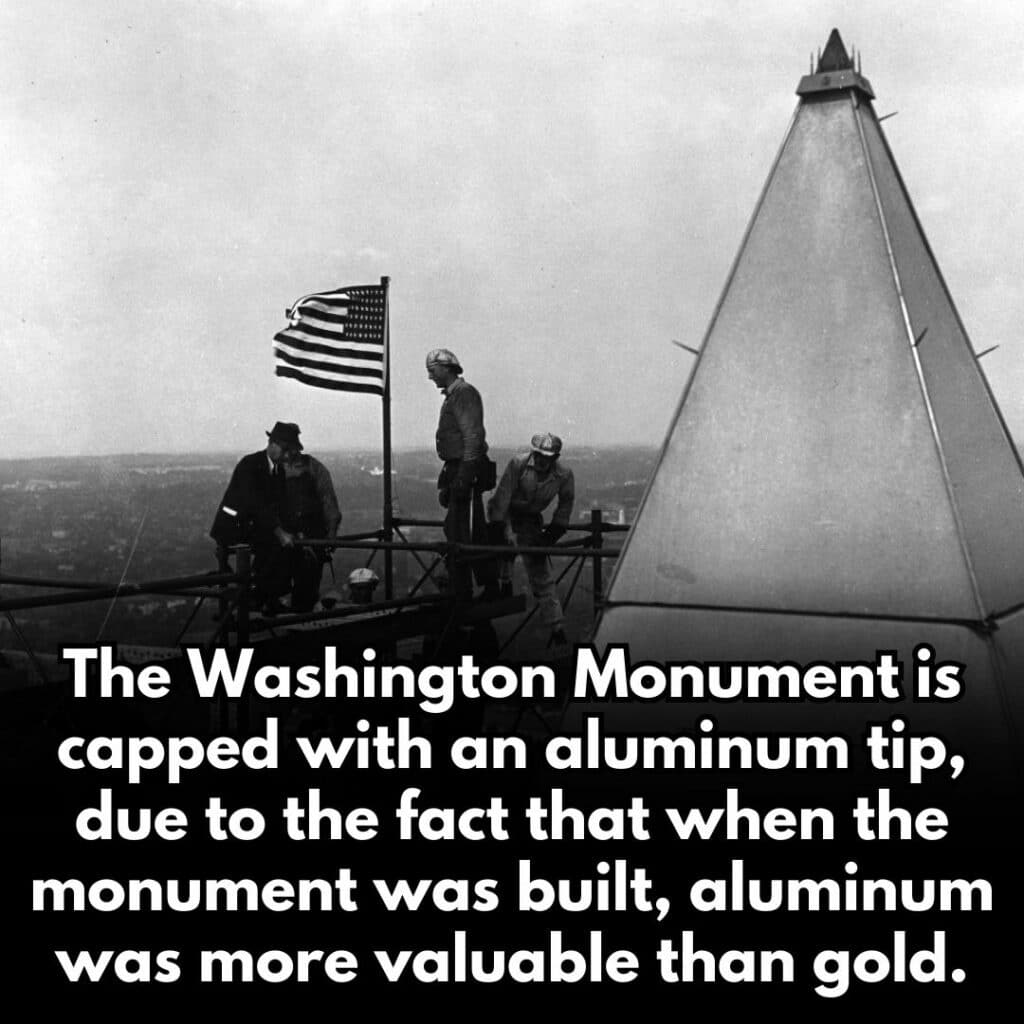
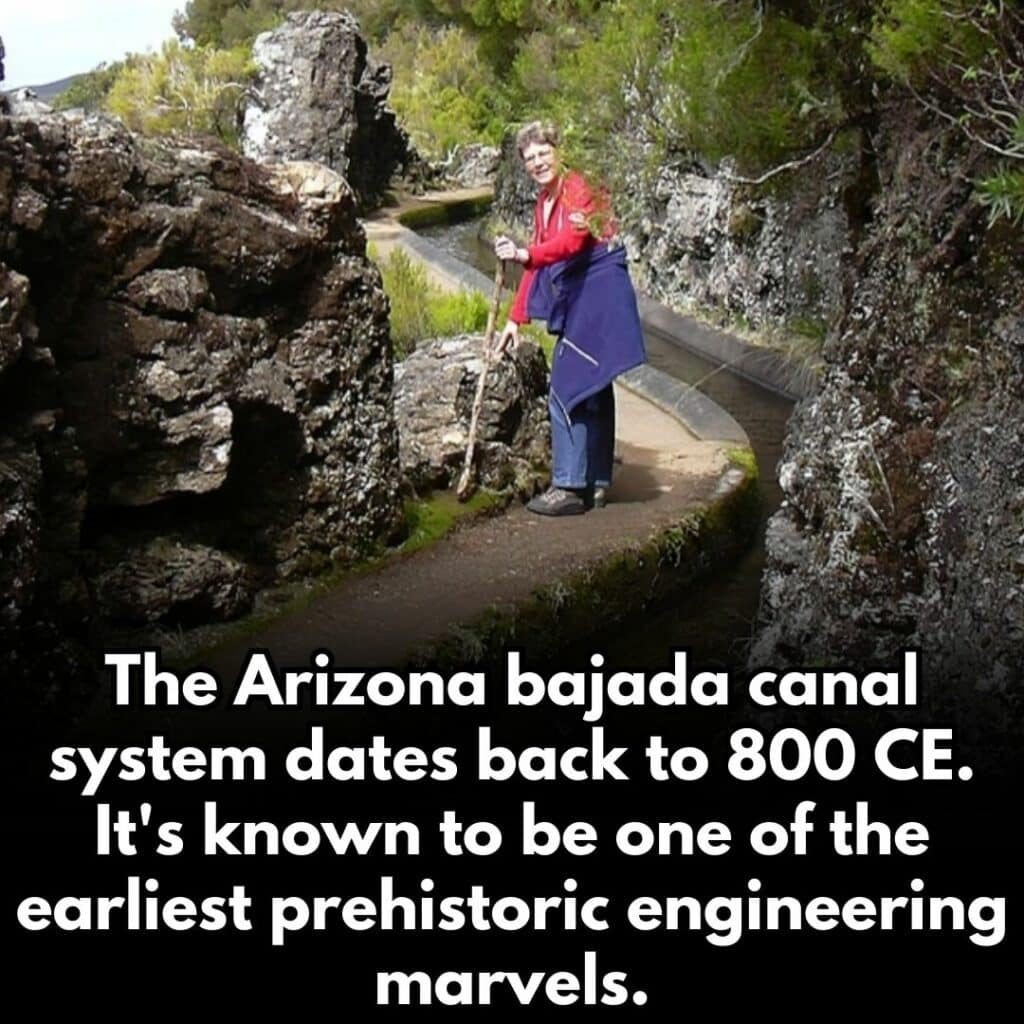


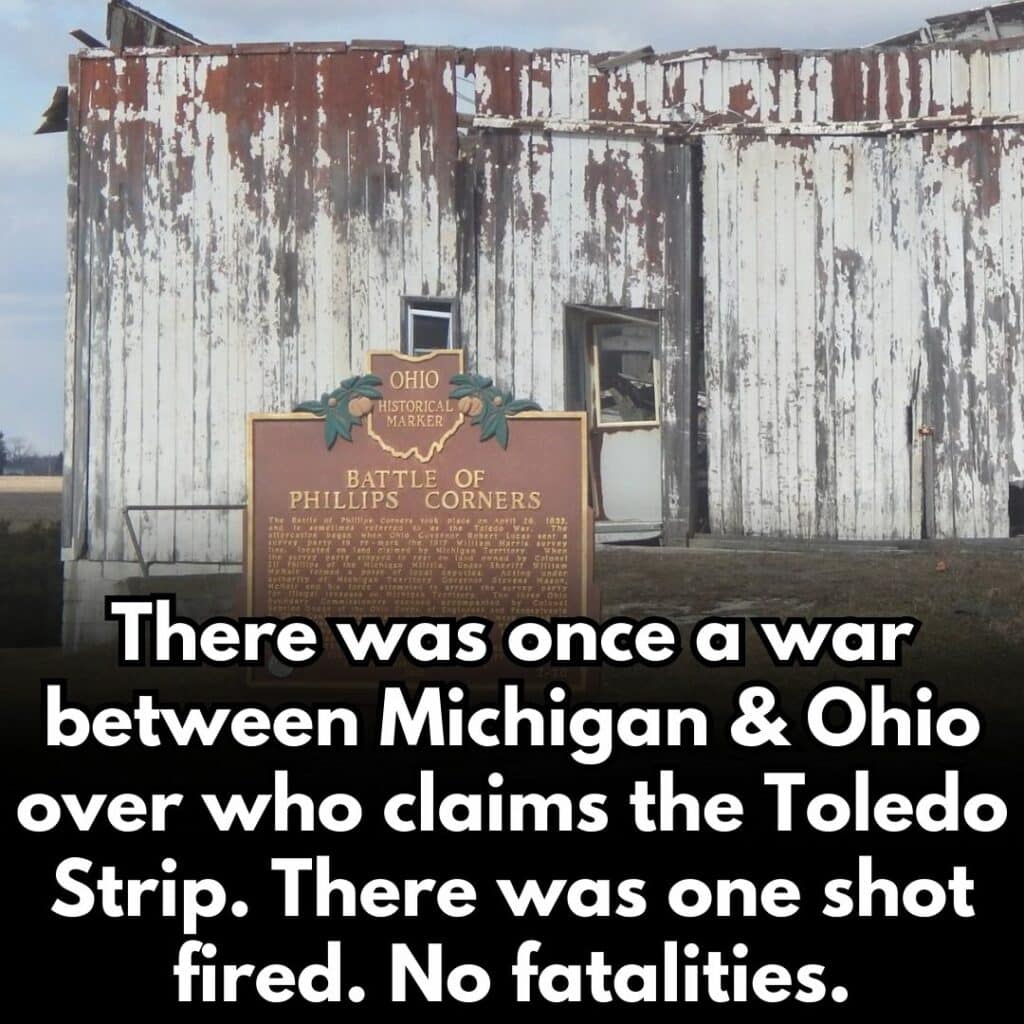

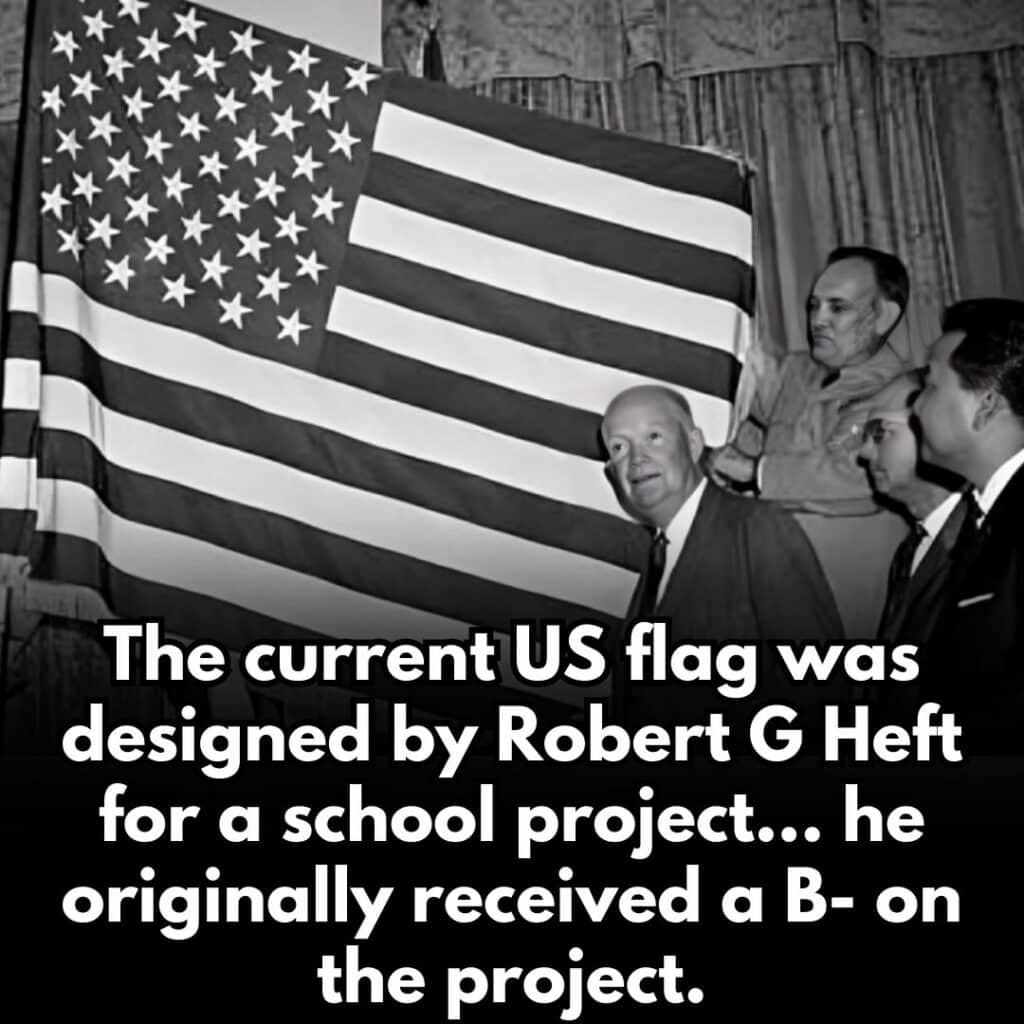
However, his design caught the attention of the White House, prompting President Dwight D. Eisenhower to select it as the official flag of the United States in 1960.


